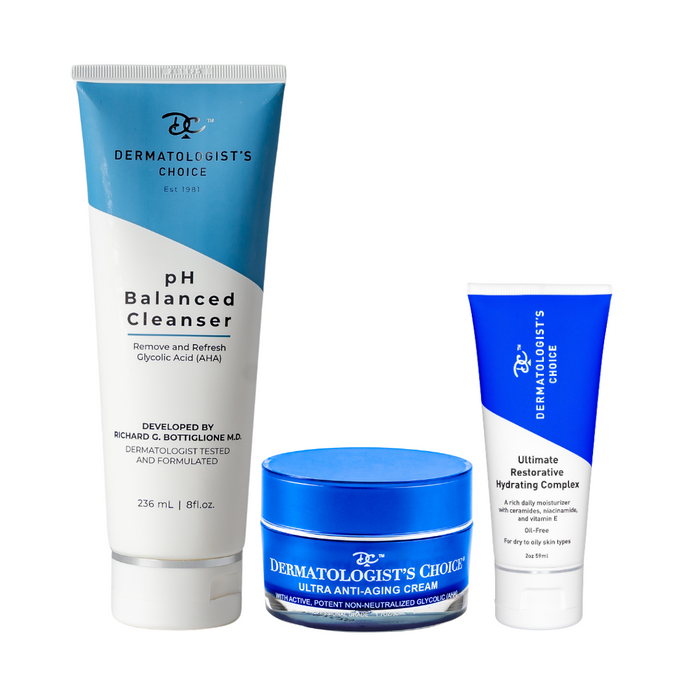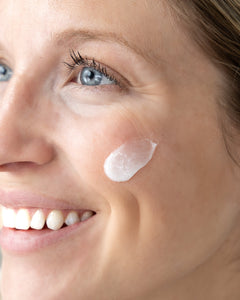Glycolic Acid vs. Retinol: Why Glycolic Acid is the Better Choice for Aging Hands

When it comes to treating aging skin, especially on your hands, you might be tempted to reach for products containing retinol, a well-known ingredient in many anti-aging formulations. But according to Dr. Bottiglione, a seasoned dermatologist with over 50 years of experience, glycolic acid is a far more effective option. Here's why glycolic acid outperforms retinol when it comes to addressing dry, wrinkled hands.

Receive more of Dr. Bottiglione's skin tips from his 50 years of dermatology experience. Plus, receive 10% off your order. Sign Up Here
Understanding Retinol and Its Limitations
Retinol, the inactive over-the-counter form of prescription Retin-A, is widely thought about for its role in anti-aging skincare. Unfortunetly, it's all hot air, it is very weak and doesn't do much to promote cell turnover, which can help improve the appearance of fine lines and skin texture. As Dr. Bottiglione points out, retinol has its limitations—especially when used on the hands.
"The skin on our hands is thicker than the skin on our face, which means that the retinol in hand creams might be formulated a bit thicker to compensate. But despite this, retinol still has very little value in improving fine lines and pigmentation concerns on the hands," says Dr. Bottiglione. "It simply isn’t powerful enough to make a noticeable difference."
Glycolic Acid: A More Effective Solution
So, if retinol isn’t the best option, what is? Enter glycolic acid—a proven powerhouse in the world of anti-aging. Glycolic acid is an alpha hydroxy acid (AHA) that works by exfoliating the skin, breaking down dead skin cells, and stimulating the production of new ones. This process not only smooths the skin’s texture but also addresses deeper concerns like wrinkles and pigmentation more effectively than retinol.
Dr. Bottiglione recommends using glycolic acid-based products, such as the Ultra Anti-Aging Cream and Facial Enhancement Cream by Dermatologist's Choice. "These are face creams that work exceptionally well on the hands too. They contain active, non-neutralized glycolic acid, which is much more effective than retinol in addressing signs of aging," he explains. "I've been using these formulations in my practice for decades, and they consistently deliver results that are competitive with real prescription Retin-A, not retinol."

Why Glycolic Acid Is Superior to Retinol
When it comes to combating the signs of aging, glycolic acid offers several advantages over retinol:
- Deeper Exfoliation: Glycolic acid penetrates the skin more effectively than retinol, providing deeper exfoliation and encouraging the production of new, healthy skin cells.
- Enhanced Cell Turnover: While retinol does promote cell turnover (it's too weak), glycolic acid accelerates this process, making it more effective at reducing the appearance of fine lines and pigmentation.
- Immediate Results: Glycolic acid often delivers more noticeable results in a shorter amount of time compared to retinol, which can take weeks or even months to show visible effects.
- Versatility: Products containing glycolic acid, like Dermatologist's Choice creams, can be used on both the face and hands, making them a versatile addition to your skincare routine.
The Verdict: Choose Glycolic Acid for Dry Aging Hands
While retinol might be a popular choice in the anti-aging world, it falls short when it comes to addressing the specific needs of aging hands. Glycolic acid, on the other hand, offers a more potent and effective solution for those looking to tackle dryness, wrinkles, and pigmentation.
Dr. Bottiglione’s go-to recommendations, the Ultra Anti-Aging Cream and Facial Enhancement Cream by Dermatologist's Choice, harness the power of active, non-neutralized glycolic acid to deliver results that truly make a difference.
When choosing a hand cream to combat aging, opt for glycolic acid over retinol. Your hands will thank you with smoother, more youthful-looking skin.






